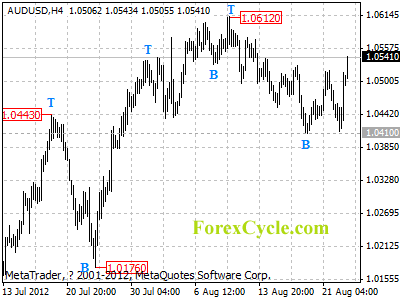Article by Investment U
View the Investment U Video Archive
This week: Monsanto seeds another dividend increase, dividends in the emerging markets and the SITFA.
Monsanto’s Genetically Modified Dividends
Just about everything is going Monsanto’s (NYSE: MON) way.
They are the largest genetically engineered seed producer in the world. And in case you missed my other segments on Monsanto, genetically engineered seed is about the only chance the world has of feeding itself over the next five decades.
The worldwide strains on the food and water supplies I mentioned in last week’s segment are only getting worse and producing enough food will fall squarely on seeds and fertilizer.
Monsanto also announced a new share repurchase of up to $1 billion of their common stock. The CFO said their strong financial position allows them to prioritize the value.
Last week a federal grand jury awarded Monsanto $1 billion in a patent infringement suit against the monster company DuPont.
They expect to see a 5% to 10% jump in corn seed prices in 2013, and if that’s not enough, they increased their dividend by 25% last week.
About the only thing I don’t like about Monsanto is the fact that they are within $3 of their 52-week high. The 200-day chart is on the screen now.

As you can see, it appears to be fully priced. A pull back toward the 200-day price would be nice.
This is one great company!
Emerging Markets Dividend Investing
Speaking of dividends, a recent Barron’s article was touting companies in the emerging markets as a better source of higher payers.
The article said the emerging markets have it all, income, a little growth and reasonable prices.
Emerging market income yields are in the 3% range while the U.S. benchmark is about 2.2%. Most investors focus on the U.S. for income stocks and that focus has driven them sky high.
And the MSCI Emerging Market Index is trading at 20% below the U.S.’ PE ratio.
Baxter Hines of the Allianz NFJ International Fund said in the article that Copel, the real name is on the screen now (Companhia Paranaense de Energia), the Brazilian electric company trades at 10 times next year’s earnings and pays a 4.2% dividend.
Hines also likes the growth prospects for this one. He sees the middle class in Brazil expanding with increasing use of appliances and electric gadgets.
Favorable demographics, lower debt levels and favorable economic tail winds are expected to drive the growth of dividends in the EM and that has many fund managers focusing on them.
According to Barron’s, in just three years assets in emerging market dividend funds have grown by 78%.
One problem with this approach is that Brazil, Taiwan and Chile do not have tax treaties with the U.S., so the dividends are treated as ordinary income and do not get favorable dividend tax treatment.
For that reason, the fund managers suggest you hold these in a tax deferred accounts, IRAs, or 401(k)s.
Ryan Wibberley of CIC Wealth Management said there are some concerns about the reliability of numbers that come for the emerging markets but you cannot fake dividends. I like that…
Finally the SITFA
This week it has to go to the newest design of aircraft that can fly from New York to Los Angeles in one hour. One hour!
The X51A WaveRider can reach speeds of 3,600 miles, that’s mach 6, for 300 seconds before, I’m not making this up, before breaking into pieces and falling into the ocean.
This is described as the equal of going from props to jets, but I don’t remember any of the jets breaking up into small pieces on their test runs.
The Pentagon has spent $2 billion on research for this one, $2 billion!
I wonder what a ticket costs to ride something that breaks into pieces before you land.
I don’t get it.
Good Investing,
Steve McDonald


Article by Investment U







 Tradervox.com (Dublin) – Glenn Stevens is facing allegations that he misled the parliament about his knowledge of corruption deals involving Note Printing Australia Ltd staffs who are alleged to have bribed international officials to win currency printing contracts. In a statement to the press, the Reserve Bank of Australia has denied any wrongdoing from its Governor Glenn Stevens. The news was given by the Australian Broadcasting Corp. today. Glenn is accused of misleading the parliamentary panel when he testified before it last year where he claimed that RBA officials were unaware of these allegations prior to media reports in 2009.
Tradervox.com (Dublin) – Glenn Stevens is facing allegations that he misled the parliament about his knowledge of corruption deals involving Note Printing Australia Ltd staffs who are alleged to have bribed international officials to win currency printing contracts. In a statement to the press, the Reserve Bank of Australia has denied any wrongdoing from its Governor Glenn Stevens. The news was given by the Australian Broadcasting Corp. today. Glenn is accused of misleading the parliamentary panel when he testified before it last year where he claimed that RBA officials were unaware of these allegations prior to media reports in 2009.